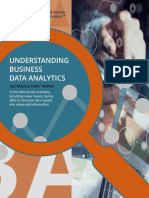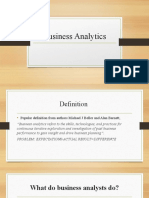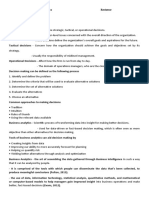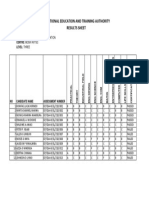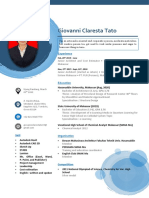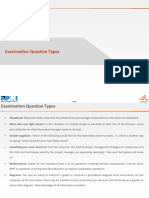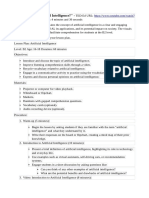0% found this document useful (0 votes)
11 views12 pagesSession 4
Business analytics involves analyzing data to make informed business decisions using techniques like data mining and predictive modeling. The DIKW Pyramid framework illustrates the progression from data to wisdom, while various approaches include descriptive, diagnostic, predictive, and prescriptive analytics. Key challenges include data quality, integration, and talent acquisition, while benefits encompass improved decision-making, operational efficiency, and competitive advantage.
Uploaded by
gopalkumartiwari2002Copyright
© © All Rights Reserved
We take content rights seriously. If you suspect this is your content, claim it here.
Available Formats
Download as PDF, TXT or read online on Scribd
0% found this document useful (0 votes)
11 views12 pagesSession 4
Business analytics involves analyzing data to make informed business decisions using techniques like data mining and predictive modeling. The DIKW Pyramid framework illustrates the progression from data to wisdom, while various approaches include descriptive, diagnostic, predictive, and prescriptive analytics. Key challenges include data quality, integration, and talent acquisition, while benefits encompass improved decision-making, operational efficiency, and competitive advantage.
Uploaded by
gopalkumartiwari2002Copyright
© © All Rights Reserved
We take content rights seriously. If you suspect this is your content, claim it here.
Available Formats
Download as PDF, TXT or read online on Scribd
/ 12




